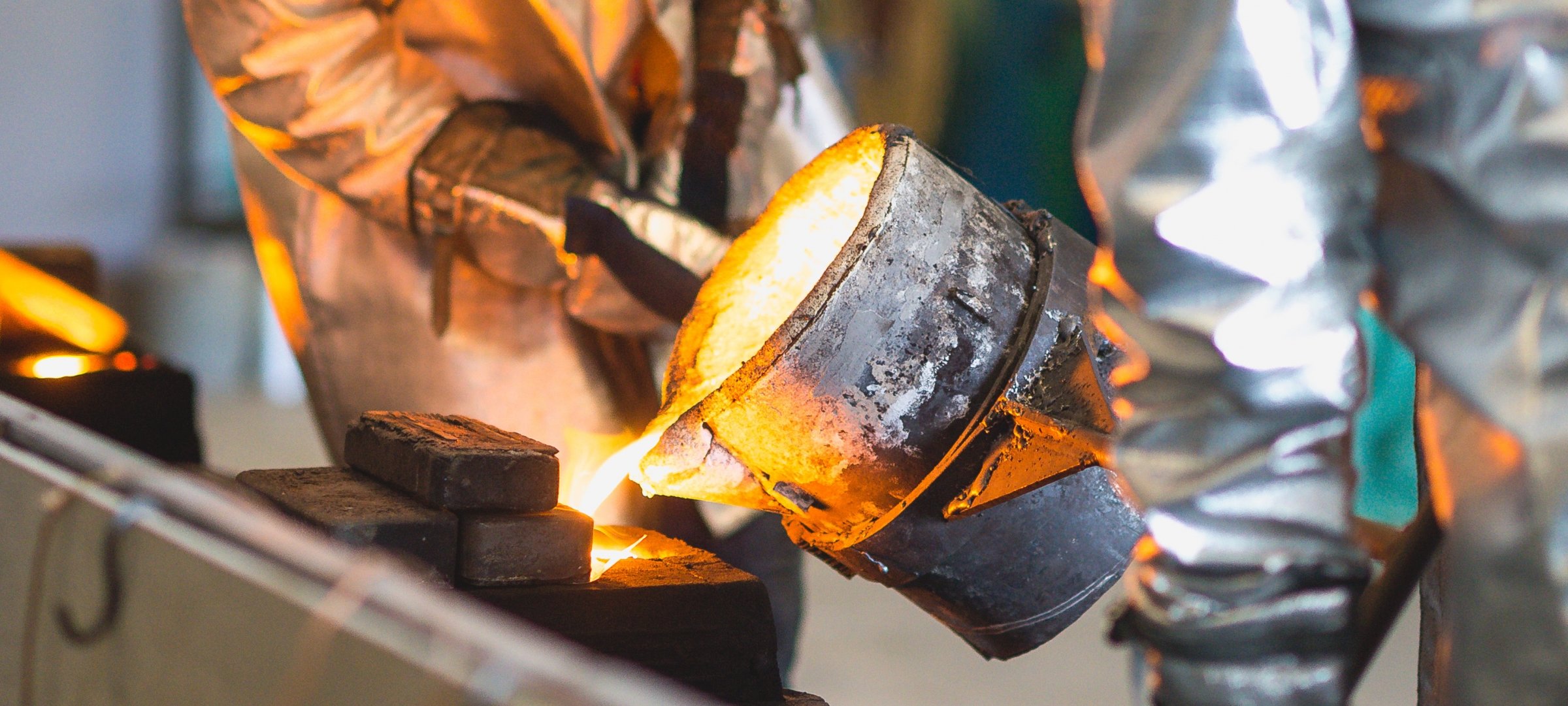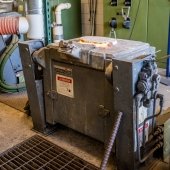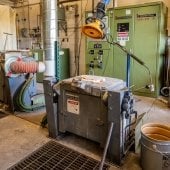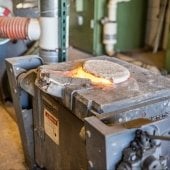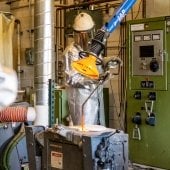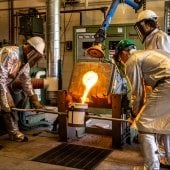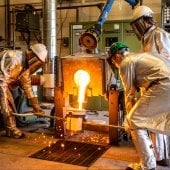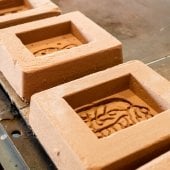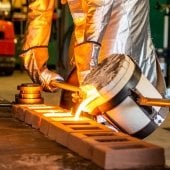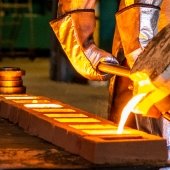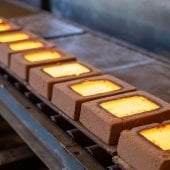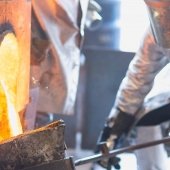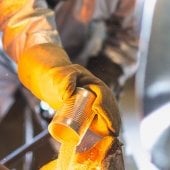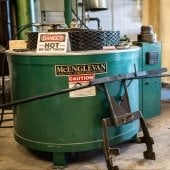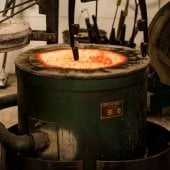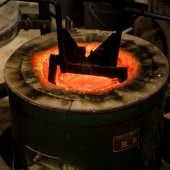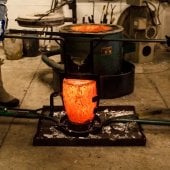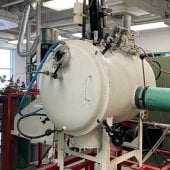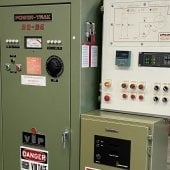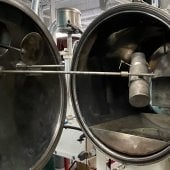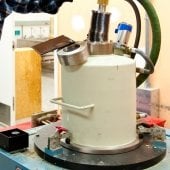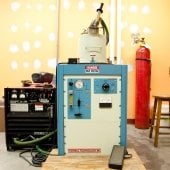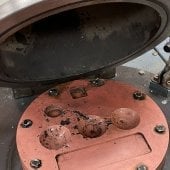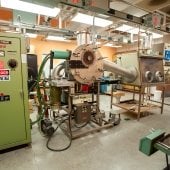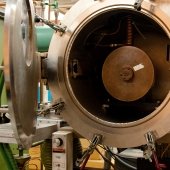Facilities that support melting and casting of metals; including simulation, molding, pattern making, melting, and analysis capabilities for alloy development and prototyping.
Induction Melting
Induction melting uses a magnetic field to create a flow of electrons in a conductive metal, creating resistance, which causes an increase in temperature in the metal. An attribute of induction melting is that heating rates can be very high since heat is generated internally, and the heating can be focused to different depths into the material. As a melting tool, the process is commonly used with ferrous alloys such as iron and steel.
Photo Gallery
Resistance Furnace Melting
Resistance furnaces typically use a closed electrical circuit of wound or patterned wire in the walls of the furnace which, through resistance creates heat when a current is applied. Instead of heat being generated within the metal, it is transferred from the walls to the metal mostly by radiation and convection. An advantage of resistance heating furnace is that it can be sealed and a protective gaseous atmosphere can be used to minimize oxidation at high temperatures. Resistance heating is commonly used with aluminum and copper alloys.
Photo Gallery
Speedy Melt
Non-ferrous metal alloys
Photo Gallery
Vacuum Induction Melting
Vacuum induction melting (VIM) uses an induction heating source within a sealed, air-evacuated chamber. Often, crucibles that minimize contamination are used, and combined with the sealed chamber environment, can create alloys with strict tolerances in their compositions. Alloys that are commonly melted using VIM include aluminum, magnesium, copper, and nickel alloys.
Photo Gallery
Arc Melting
Arc melting uses an electrical arc between an inert electrode and a metal charge in an air-evacuated, argon-backfilled chamber to generate the heat used for melting. An advantage of arc melting is that it can be used to melt refractory metals and other difficult to melt alloys with high melting temperatures.
Photo Gallery
Melt Spinning
A melt spinner utilizes a heat source (e.g., induction) to melt an alloy charge, which is subsequently streamed to a rotating copper wheel where the alloy solidifies as a thin, continuous ribbon of metal. Due to the fine scale of the product and the high heat extraction from the high thermal conductivity copper wheel, extremely high cooling rates (up to 106 degrees per second) can be achieved. A major disadvantage of melt spinning is that the as-solidified ribbon requires subsequent consolidation to produce a bulk form of the metal.
